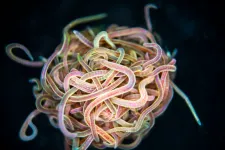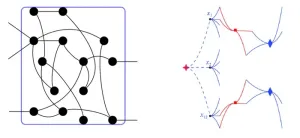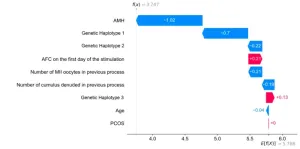(Press-News.org) Neural networks made from photonic chips can be trained using on-chip backpropagation – the most widely used approach to training neural networks, according to a new study. The findings pave the way toward developing optically driven and energy-efficient machine learning technologies that reduce both the carbon footprint and costs of AI computation. Neural networks (NNs) are an approach to machine learning conceptually inspired by the biology of the brain and have become a mainstay in various modern scientific and commercial AI technologies, including the widely discussed ChatGPT architectures. However, as NNs continue to advance and become even more widespread, the energy required to power the technologies is expected to grow exponentially, perhaps doubling every 5-6 months, as some estimates suggest. Such rapidly increasing energy costs necessitate a shift toward more energy-efficient hardware solutions, such as photonic NNs. One of the first things needed to effectively adopt photonic circuits in NN applications is to develop a photonic implementation for so-called backpropagation, the most widely used NN training method. Here, Sunli Pai and colleagues describe a hybrid photonic neural network (PNN) chip that can perform fast and efficient on-chip backpropagation training. Using their multilayer photonic integrated circuit, Pai et al. performed in situ backpropagation training by sending light-encoded errors backwards through the photonic neural network and measuring the optical interference with the original forward-going “inference” signal. In a series of proof-of-principle experiments, the authors found that the PNN performed comparably to digital NN platforms, suggesting a route for scalable, energy-efficient on-chip machine learning. “Photonic networks are now becoming competitive with state-of-the-art digital platforms, in terms of speed and energy efficiency,” writes Charles Roques-Carmes in a related Perspective. “It is hoped that in the next few years, large-scale hybrid and all-optical photonic chips will rival their electronic counterparts in inference and learning of real-world AI tasks.”
END
Backpropagation training achieved in photonic neural network
2023-04-27
ELSE PRESS RELEASES FROM THIS DATE:
Comparing the genes of 240 species of mammals—and one famous dog—offers a powerful new approach for understanding biology and evolutionary history
2023-04-27
Ever since scientists first read the complete genetic codes of creatures like fruit flies and humans more than two decades ago, the field of genomics has promised major leaps forward in understanding basic questions in biology.
And now comes a major installment of that promise. In what Howard Hughes Medical Institute Investigator and HHMI Professor Beth Shapiro calls a treasure trove of research, more than 150 researchers from 50 institutions are publishing 11 different papers in the April 28, 2023, issue of Science. The research brings new insights from the Zoonomia Project, an unprecedented collaborative effort led by Elinor Karlsson, director of the Vertebrate Genomics ...
Pulling the plug on viral infections: CRISPR isn’t just about cutting
2023-04-27
CRISPR claimed scientific fame for its ability to quickly and accurately edit genes. But, at the core, CRISPR systems are immune systems that help bacteria protect themselves from viruses by targeting and destroying viral DNA and RNA. A new study published in Science reveals a previously unrecognized player in one such system – a membrane protein that enhances anti-viral defense – simultaneously broadening our understanding of and raising more questions related to the complexities of CRISPR.
Uncovering New Clues about CRISPR
CRISPR systems consist of two major components – a guide RNA that targets a specific viral DNA or RNA sequence and a Cas enzyme ...
Unraveling the mathematics behind wiggly worm knots
2023-04-27
For millennia, humans have used knots for all kinds of reasons — to tie rope, braid hair, or weave fabrics. But there are organisms that are better at tying knots and far superior — and faster — at untangling them.
Tiny California blackworms intricately tangle themselves by the thousands to form ball-shaped blobs that allow them to execute a wide range of biological functions. But, most striking of all, while the worms tangle over a period of several minutes, they can untangle in mere milliseconds, escaping at the first sign of a threat from a predator.
Saad Bhamla, assistant ...
Information ‘deleted’ from the human genome may be what made us human
2023-04-27
New Haven, Conn. — What the human genome is lacking compared with the genomes of other primates might have been as crucial to the development of humankind as what has been added during our evolutionary history, according to a new study led by researchers at Yale and the Broad Institute of MIT and Harvard.
The new findings, published April 28 in the journal Science, fill an important gap in what is known about historical changes to the human genome. While a revolution in the capacity to collect data from genomes ...
Mammalian evolution provides hints for understanding the origins of human disease
2023-04-27
CHAPEL HILL, N.C. – Hundreds of scientific studies have been conducted over the years to find the genes underlying common human traits, from eye color to intelligence and physical and mental illnesses.
Patrick Sullivan, MD, FRANZCP, the Yeargan Distinguished Professor of Psychiatry and Genetics at the UNC School of Medicine, and the Psychiatric Genomic Consortium have produced a new packet for the journal Science, to give researchers another way to understand human disease, using the power of evolutionary genomics.
“This is a tool that can give us a lot of important hints about human disease,” ...
How dormant bacteria come back to life
2023-04-27
Solving a riddle that has confounded biologists since bacterial spores — inert, sleeping bacteria — were first described more than 150 years ago, researchers at Harvard Medical School have discovered a new kind of cellular sensor that allows spores to detect the presence of nutrients in their environment and quickly spring back to life.
It turns out that these sensors double as channels through the membrane and remain closed during dormancy but rapidly open when they detect nutrients. Once open, the channels allow electrically charged ions to flow out through the cell membrane, setting in motion ...
Collaborative and creative policies needed to maximize psychedelics’ therapeutic potential
2023-04-27
HOUSTON – (April 27, 2023) – Research supports the promise of psychedelics in treating conditions like depression and post-traumatic stress disorder, but the future regulatory landscape for these drugs remains unclear. Experts from Baylor College of Medicine, the University of Pennsylvania, American University and Harvard Law School call for creativity and collaboration at the federal and state levels in developing policies for the use and oversight of psychedelics and a commitment to developing a strong evidence base for efficacy and safety.
In a paper published in the journal Science, the authors, experts in bioethics, law and ...
Fish’s growth is not reduced by spawning
2023-04-27
Contrary to what is stated in biology textbooks, the growth of fish doesn’t slow down when and because they start spawning. In fact, their growth accelerates after they reproduce, according to a new article published in Science.
“Fish don’t have to choose between growth or reproduction because, in the real world, they don’t occur simultaneously but rather sequentially,” says University of British Columbia (UBC) fisheries researcher Dr. Daniel Pauly, co-author of ...
Local holographic transformations: tractability and hardness
2023-04-27
Counting problems arise in many different fields, e.g., statistical physics, economics and machine learning. In order to study the complexity of counting problems, several natural frameworks have been proposed. Two well studied frameworks are counting constraint satisfaction problems (#CSP) and Holant problems. For counting satisfaction problems over the Boolean domain, two explicit tractable families namely and , are identified; any function set which is not contained in these two families is proved to be #P-hard. Furthermore, counting CSPd is the counting constraint satisfaction problem restricted to the instances where every variable occurs a multiple of d times. The team ...
IVF procedures can be improved by combining genetic and clinical data to predict the number of eggs retrieved in patients undergoing ovarian stimulation
2023-04-27
IVF procedures can be improved by combining genetic and clinical data to predict the number of eggs retrieved in patients undergoing ovarian stimulation.
####
Article URL: https://journals.plos.org/ploscompbiol/article?id=10.1371/journal.pcbi.1011020
Article Title: Personalized prediction of the secondary oocytes number after ovarian stimulation: A machine learning model based on clinical and genetic data
Author Countries: Poland
Funding: The research was co-financed by the European Regional Development Fund under the ...




